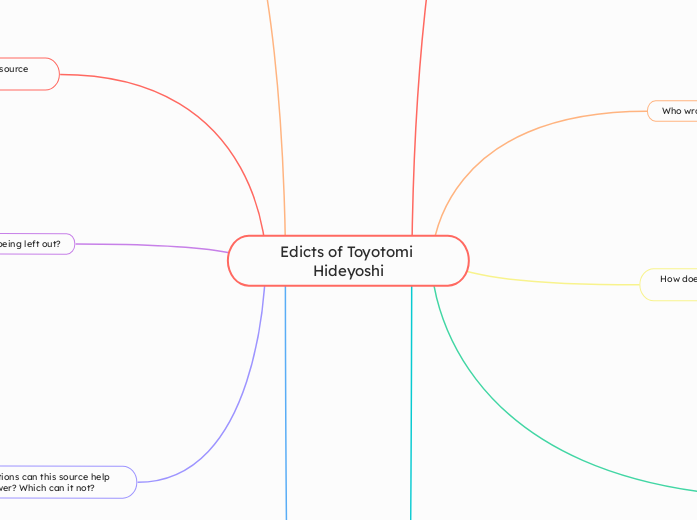Edicts of Toyotomi Hideyoshi
What does it look like?
Our primary source, the the Edicts of Toyotomi Hideyoshi look like a plank of wood with Japanese writing on it.
I'm not sure what the Japanese typically wrote their edicts on, but the fact that the material used is so common may tell us that the Japanese thought very little of the Jesuits and missionaries.
Who wrote it?
The Edicts of Toyotomi Hideyoshi were, of course, written by Toyotomi Hideyoshi, who unified Japan and became the de-facto leader, although he was never officially in charge.
Hideyoshi
Hideyoshi wrote these edicts in order to stop the spread of Christianity in Japan, as Christianity promoted values which did not match well with the Japanese society as he wanted it.
How does the author communicate the point?
The point is communicated through five bullet points. This choice was likely made to get that point across quickly and easily, showing that this was important to get done for Hideyoshi.
What are the main ideas?
The main points of the edicts are:
Christian teachings are false.
Christian teachings are causing disorder in the provinces and Hideyoshi's vassals must keep order.
The missionaries must leave Japan.
Europeans will still be allowed to trade with Japan.
Anyone who doesn't cause disorder/disrupt buddhist teachings can come or go from Japan.
What values/beliefs of the past does it reveal?
The edicts show us how much order was valued in Japanese society, and how prominent Buddhism was at the time.
The source also shows that the Japanese believed that to have another religion would cause disorder.
Whose perspective is being left out?
These edicts obviously do not take the Christians perspectives into account, and do not take the opinions of the Japanese people into account.
Whose perspective does the source reflect?
The Edicts of Toyotomi Hideyoshi obviously reflect the perspective of Hideyoshi, who sees christian teachings as causing disorder in Japan.
Another perspective being reflected here is that of the buddhists, who were the dominant religion in Japan at the time, and probably did not want christianity to overtake them.
What are the ideas being left out?
The source, although it shows the perspective of the buddhists, it does not utilize buddhist ideas.
Instead, Hideyoshi argues that Buddhism should be kept dominant simply because it already is, showing that he values keeping order far more than he values his, or his subjects religion
Which questions can this source help me answer? Which can it not?
Questions this source answers:
What did Hideyoshi value?
Who held secular power in Japan?
Who held religious power in Japan?
Why was Japan not converted by the Jesuits?
Who did Japan consider valuable trading partners?
Questions this source does not answer:
What did the people of Japan think about Christianity?
How did the Christian missionaries respond?
Did Buddhist leaders influence this decision? How much if so?
How did European governments respond?
How much would this influence later edicts which would further isolate Japan?
Did it result in change?
Yes, the edicts did result in various changes. In the short term, they expelled christian missionaries, and prevented Japan from being converted to Catholicism.
In the long term, these edicts began Japans move towards isolationism in general.
